Nectar Plants
(By botanical name)
THIS
PAGE IS "UNDER CONSTRUCTION" -- Many more to be added throughout the
year.
Click on the botanical name to be taken to a larger photo (and sometimes several) of the plant.
An "*" indicates the plant is also a host plant for a butterfly.
Herbaceous
Plants
| Asclepias sp. (Milkweeds) * | |
Asclepias amplexicaulis - Blunt-leaf Milkweed * While not found in the Dallas area (to my knowledge), it has been seen at the LBJ Grasslands in Wise Co., TX. | |
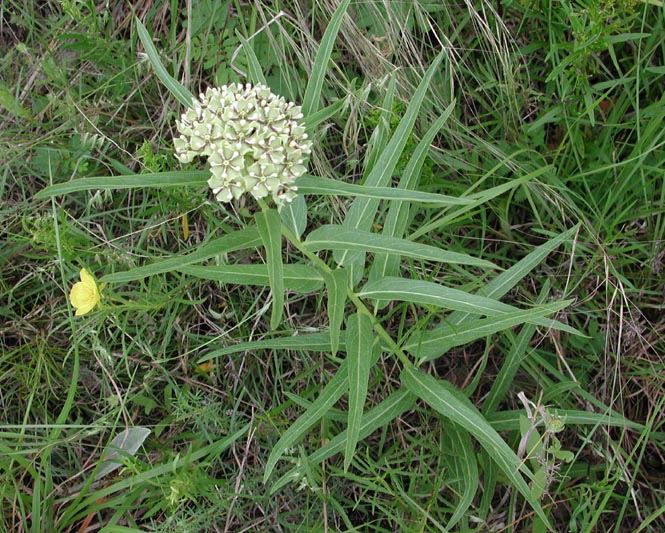 | Asclepias asperula -- Antelope Horns One of our more common (and earliest) native milkweeds. Breaks ground in early March, begins blooming by mid-April and then dies back to the ground in the heat of the summer. |
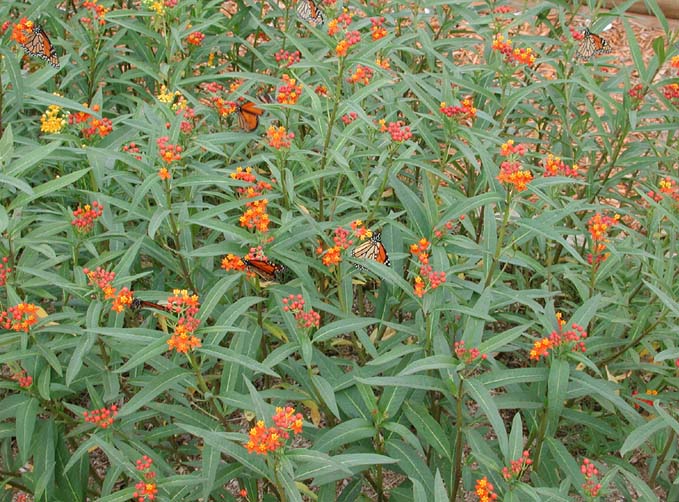 | Asclepias curassavica - Tropical Milkweed, Mexican Milkweed, Bloodflower * Easy to find in nurseries, Tropical Milkweed works well in the garden. Unlike our native milkweeds which tend to wither during the heat of the summer, Tropical Milkweed thrives in the heat and blooms from spring to first frost. It dies to the ground with a freeze but I've had plants come back the following year when mulched well...and if we have a mild winter. Plan on treating this plant as an annual. Very attractive nectar source to a wide variety of species -- from hairstreaks and skippers to swallowtails. |
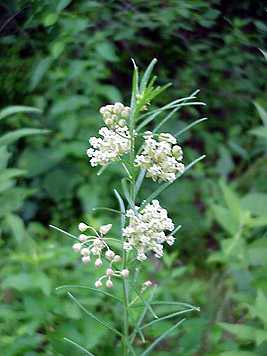 | Asclepias linearis -- Slim Milkweed * An uncommon milkweed with very thin leaves which is surprisingly used by monarchs as a host. Flowers are a nectar source for smaller species of lepidopteria like hairstreaks, blues and skippers. |
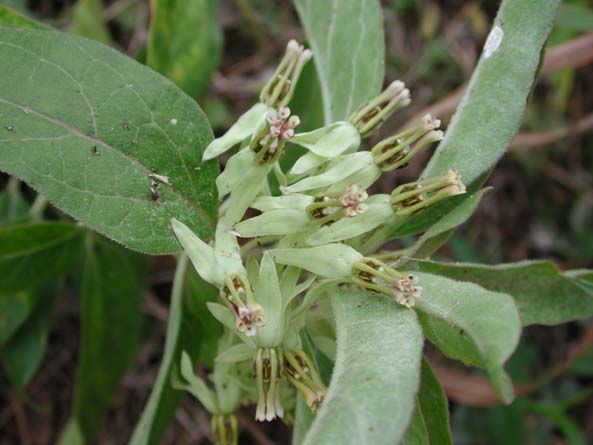 | Asclepias oenotheroides -- Side-Cluster Milkweed, Hierba de Zizotes * Although found in Dallas, this species is more common westward. Similar to Green Milkweed but the blooms are located in clusters on the sides of the plants. |
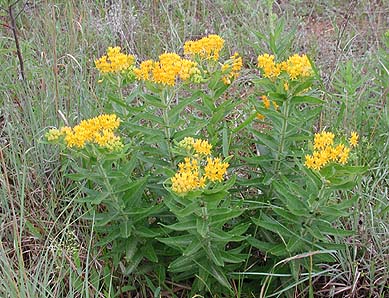 | Asclepias tuberosa -- Butterfly Weed * Blooms can be yellowish-orange to bright orange, to almost red. Prefers loose, sandy soil -- which there is not much of in Dallas. Fairly common north and west of Dallas. Often available in nurseries, this particular milkweed, while a great nectar source is not used much by monarchs in our area as a host plant. |
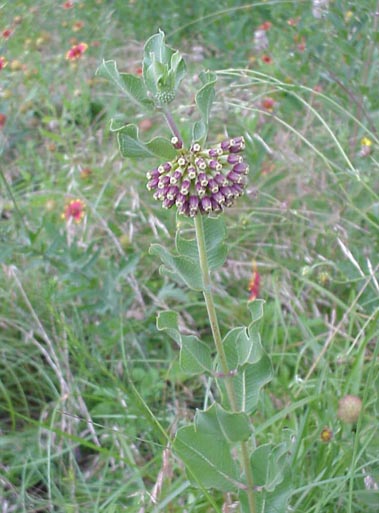 | Asclepias viridiflora -- Wand Milkweed * A striking plant that can be found in bloom during June and July on prairie remnants. |
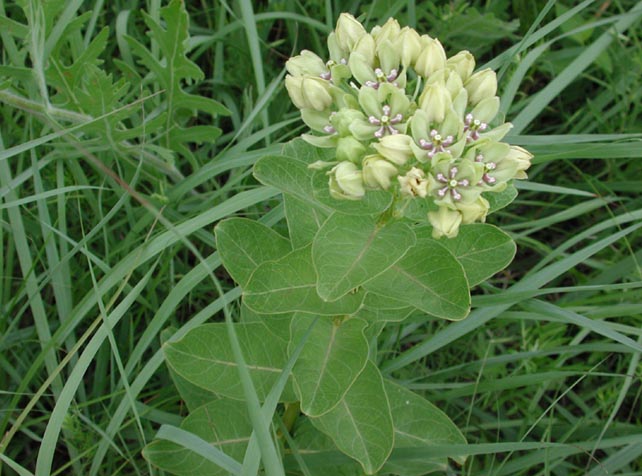 | Asclepias viridis - Green Milkweed * Probably the most common native milkweed in the Dallas area. Found in vacant lots, pastures, meadows and prairie remnants. Emerges in early March and blooms through May and early June then usually goes dormant through much of the heat of the summer. Re-emerges in September with the fall rains where it is utilized by the breeding migrating monarchs. |
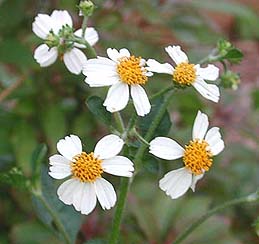 | Bidens pilosa -- Shepherd's-needle * A fantastic nectar plant for small, medium and large butterflies. An annual that easily reseeds, this is a plant that should be added to every butterfly garden. Prefers full sun and flowers continuously. A host plant for the Dainty Sulphur (Nathalis iole). |
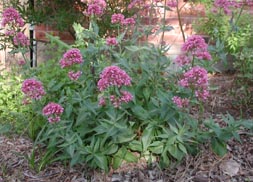 | Centranthus ruber -- Jupiter's Beard, Red Valerian A perennial, semi-evergreen plant that blooms early in spring through early summer and sporadically until first frost. Excellent early spring nectar source. |
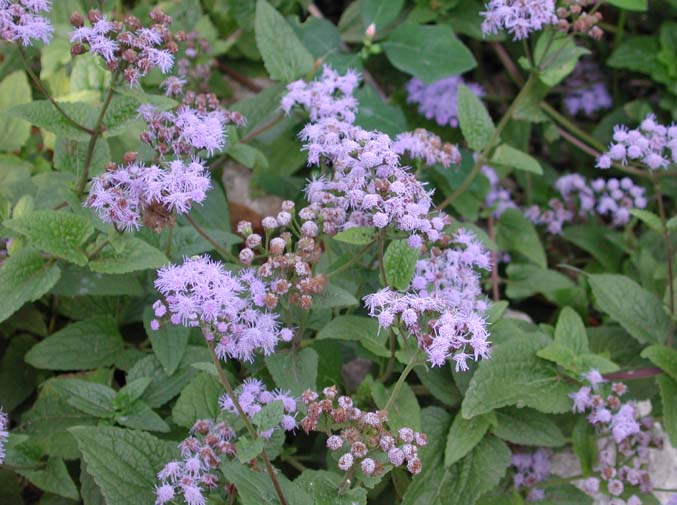 | Conoclinium coelestinum -- Hardy Ageratum Formerly Eupatorium coelestinum, this fall blooming native is adapted to full sun or part shade locations, it thrives with regular watering in well-drained soil. Plants grow from one to three feet tall and will spread by underground rhizomes once established, so choose a garden location carefully and give it room to fill in. For more information see Tina Dombrowski's article in the January, 2005 DCLS NEWS. |
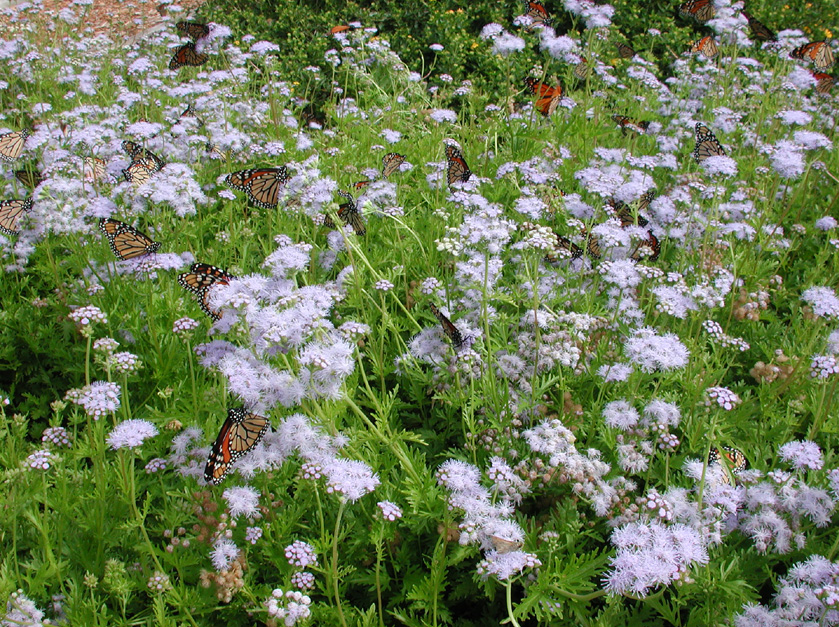 | Conoclinium greggii -- Greg's Blue Mistflower If you want monarchs and queens in your yard (as well as many other species) then you can't go wrong with this plant. A perennial which will only come back stronger each year, it can actually be dividied and spread around to other locations or shared with friends. Blooms from spring to first frost. Particularly attractive to migrating monarchs. |
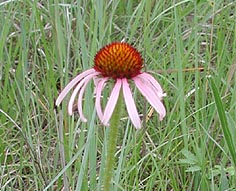 | Echinacea sp. -- Purple Coneflower * Numerous cultivars are available in the nursery trade, including the typical "Purple Coneflower" (Echinacea purpurea), White Swan, Magnus, and others. All seem to do well and are readily visited by a variety of butterflies, particularly brushfoots, skippers, hairstreaks and blues. |
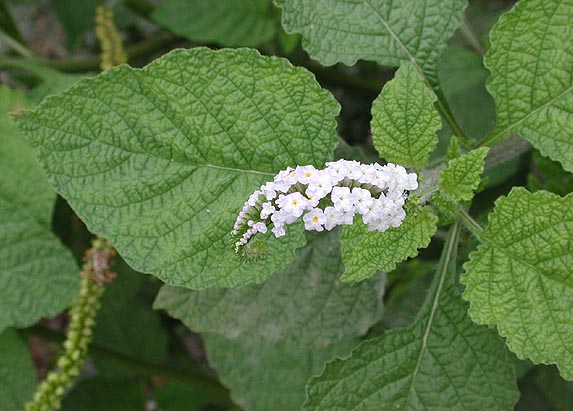 | Heliotropium indicum -- Turnsole Long pale blue flower stalks on this 2' - 3' foot annual make it an attractive addition to the garden. Loves the summer heat and is sought out by hairstreaks, blues, monarchs, queens and others. For more detailed information, see the October, 2005 issue of the DCLS News on the website. |
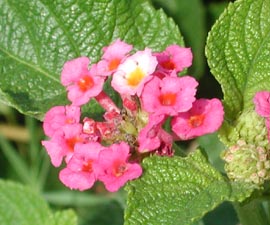 | Lantana sp. -- Lantana If you only have room for one plant in your butterfly garden, it should be lantana. With no shortage of color and size options to choose from, you can definitely find one that is right for your garden. Annuals and perennials, although in our area even the annual varieties tend to survive the winter. These plants need full sun and are extremely drought tolerant. A favorite nectar source for butterflies from large swallowtails to the smallest hairstreaks and blues. |
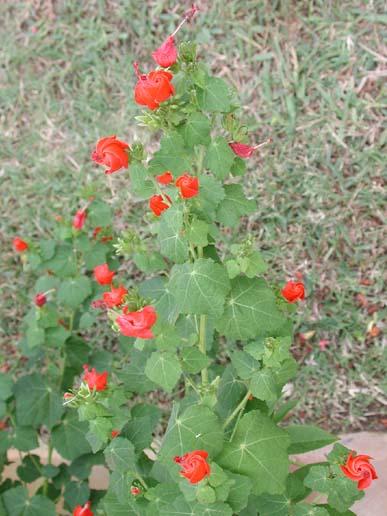 | Malvaviscus arboreus var. drummondii - Turk's Cap Perennial which can take full sun or partial shade. A particular favorite of Cloudless Sulphurs, it will also be utilized by Gulf Fritillaries, Swallowtails and others. Grows to about 4' with equal spread. |
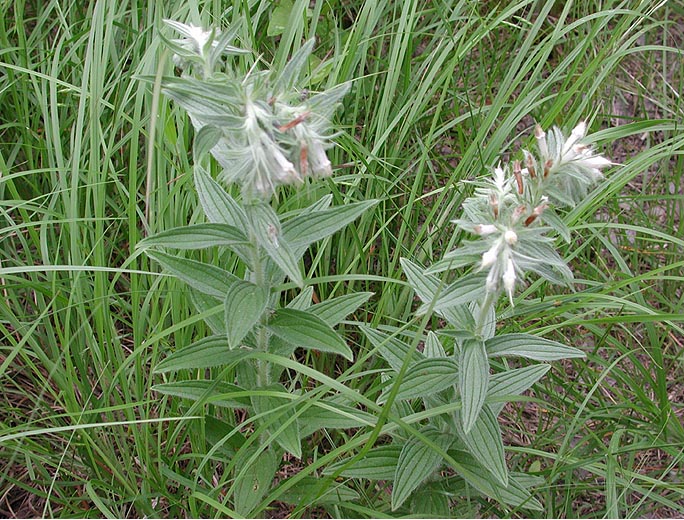 | Onosmodium bejariense - Marbleseed A spring blooming wildflower which is irresistible to Monarchs and Queens. Not offered in nurseries but can occasionally be found by mail order companies that specialize in native plants. |
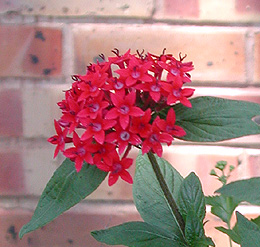 | Pentas lanceolata -- Egyptian Star, Pentas A wonderful, virtually trouble-free nectar plant that is enjoyed by larger butterflies as well as hummingbirds. There are many cultivars and it's been my experience that smaller, dwarf varieties do not do as well as the tall (3 feet +) original. An annual in our area, although plants can live several years in pots. The only "pest" of these plants that can sometimes be a problem is the larva of the Tersa Sphinx moth. |
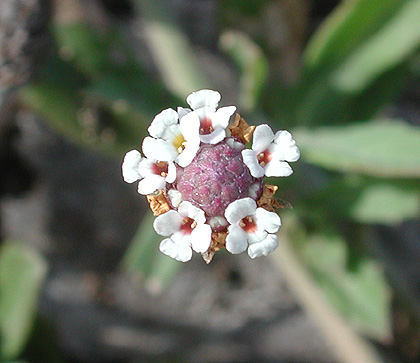 | Phyla incisa -- Texas Frogfruit * |
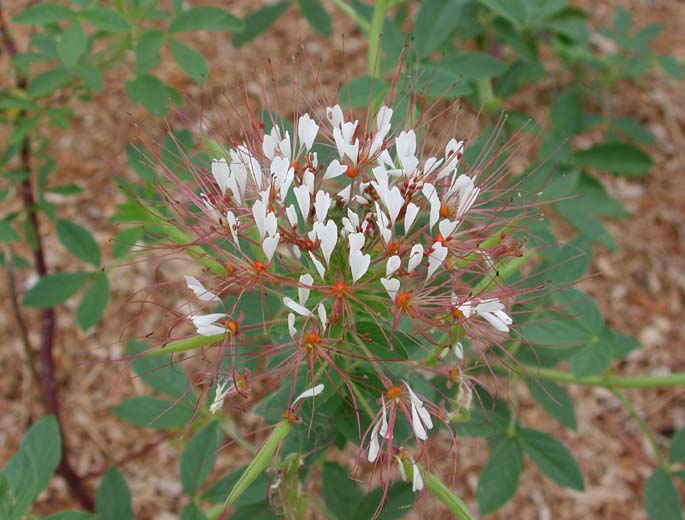 | Polanisia dodecandra -- Clammyweed * A wonderful native plant to have in the garden -- similiar in appearance to Cleome, but a much better nectar source. It is also a host plant for Cabbage Whites and Great Southern Whites. An annual that will reseed easily. |
Phlox paniculata (Summer Phlox) Summer Phlox is one of the best nectar sources for the garden if you wish to attract swallowtails. Tiger, Giant and Pipevine Swallowtails use this plant extensively and find it almost impossible to fly near it without stopping to feed. It comes in a variety of colors and after a couple of years can be divided to share with friends or plant in other locations. A great nectar plant! | |
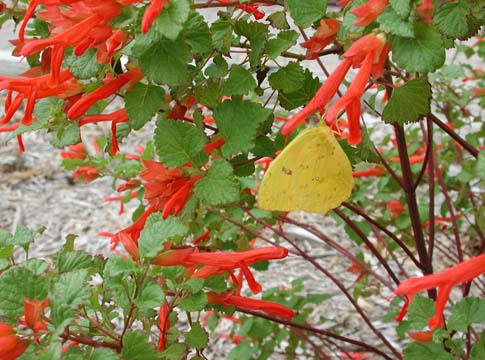 | Salvia regla -- Mountain Sage |
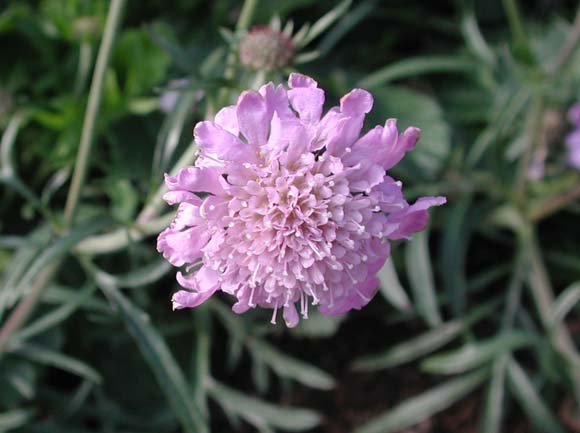 | Scabiosa columbaria -- Pincushion Flower, Scabiosa Easily found in nurseries in the spring, this beautiful perennial is a great early nectar source that lasts well into the summer and fall if given plenty of water. Non-invasive. See the February, 2004 DCLS NEWS on the website for more information. |
| Sedum spectabile (Sedum) | |
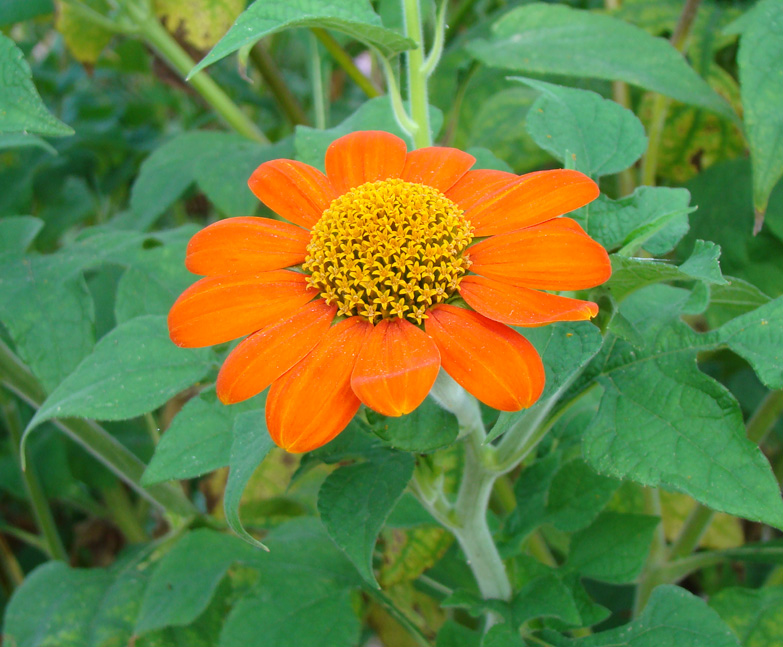 | Tithonia rotundifolia -- Mexican Sunflower There are at least a couple of varieties of this plant, one that grows up to 4 or 5 feet tall and a more compact one, which may be more suited for most people's gardens. Both are good nectar sources. Large orange blossoms provide plenty of nectar for medium to larger species in particular. An annual that will provide plenty of seeds for the following year. |
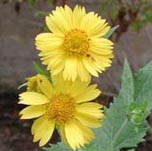 | Verbesina encelioides -- Cowpen Daisy, Crownbeard * An easily grown, reseeding annual which acts as a nectar source for various species of butterflies. A native which survives well with little water but responds with abundant blooms and foliage with additional water. Once you have it you'll always have it. Host plant for Bordered Patch (Chlosyne lacinia). |
 | Verbesina virginica -- Frostweed * One of the best plants to have in the garden. It will spend the spring and summer putting on leaves and growing to nearly 8 or more feet in the garden if given regular water. In the fall the white flower heads open and are an irresistible lure to migrating monarchs as well as many other species. It reseeds easily so you'll have plenty of seed or seedlings to share with friends. After the first hard freeze, this perennial exudes a sap at the base which freezes, adding a point of interest to the plant as well as explaining its common name. |
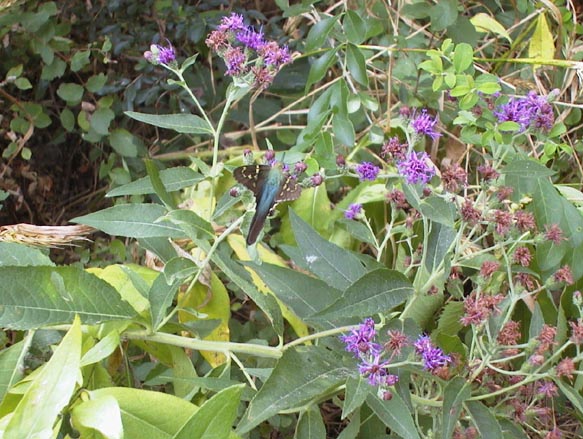 | Veronia baldwinii -- Western Ironweed |
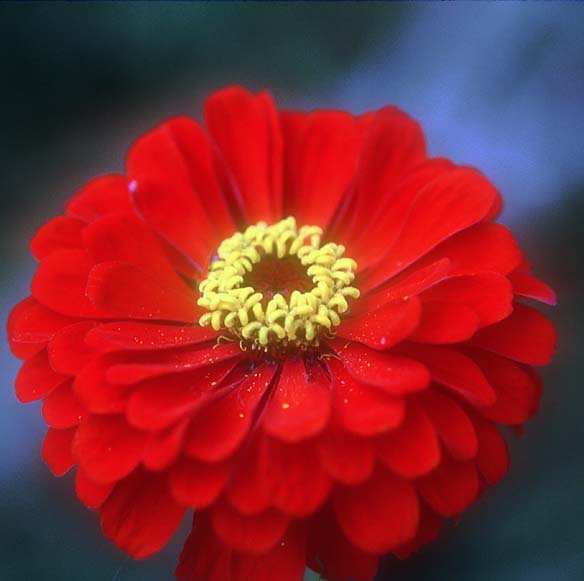 | Zinnia sp. -- Zinnia An old garden favorite, zinnias are easy to grow from seed and are a favorite of many species of butterflies. Be sure to stay away from varieties that are "double bloomed" as these make it more difficult for butterflies to get to the nectar. Single-bloom or partially double bloom varieties are best. |
Shrubs and Trees
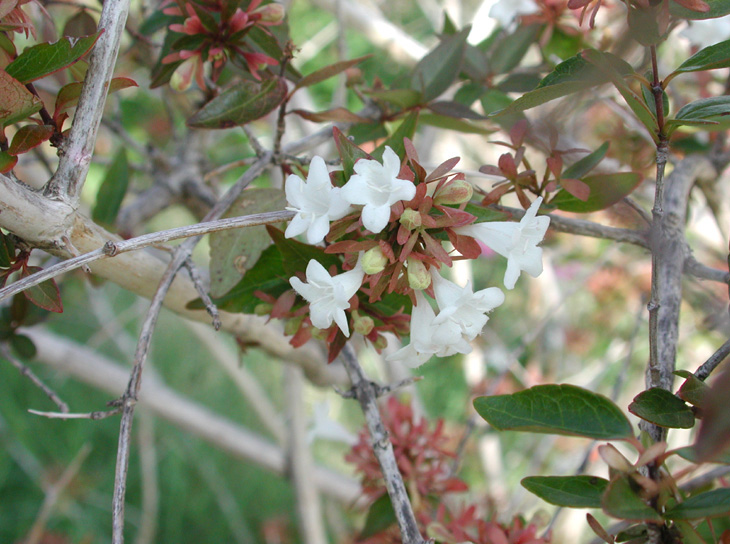 | Abelia x grandiflora (Glossy Abelia) |
| Abelia chinensis (Chinese Abelia) | |
Albizia julibrissin (Mimosa) Considered by many to be a "trash tree" the fluffy pink blooms are often used by swallowtails and various sphinx moths. | |
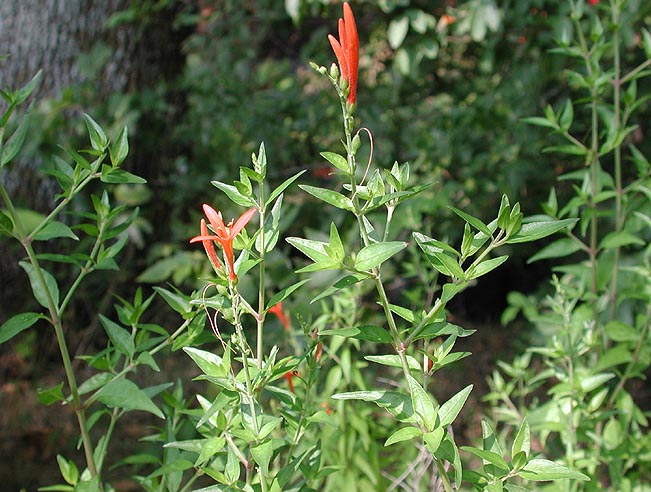 | Anisacanthus quadrifidus var. wrightii -- Flame Acanthus * A hardy native that thrives in our heat. The red flowers are attractive to Cloudless Sulphur, Orange-barred Sulphur, Gulf Fritillary, and various swallowtails. |
Berberis trifoliata - Agarito Blue-green evergreen foliage with fragrant blooms in spring which are a great lure for many early lepidoptera. For more details see the April, 2005 issue of the DCLS NEWS on the website. | |
| Buddleia sp. (Butterfly Bush) | |
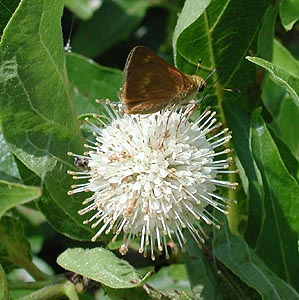 | Cephalanthus occidentalis (Button-bush) In nature it is found at the edge of lakes, creeks or streams, it actually performs quite well in a garden setting as long as it receives regular water. The white, globe-like blooms are a great nectar source for everything from skippers to swallowtails. See the August, 2003 DCLS NEWS for more details. |
Cercis canadensis - Redbud* An attractive early nectar source for a spring lepidoptera. Host plant for Henry's Elfin. | |
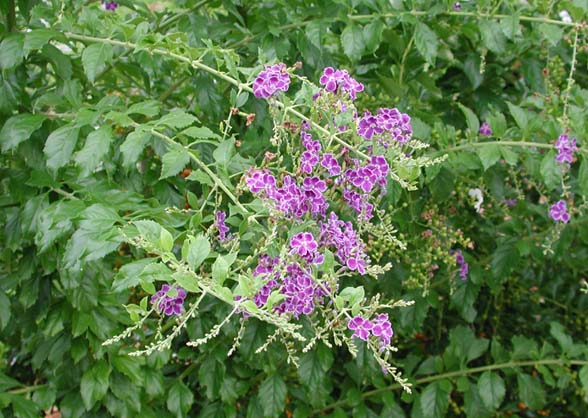 | Duranta erecta -- Golden Dewdrop, Pigeon Berry The common name comes from the yellow fruit that form after the violet or white flowers go to seed. This plant can grow over six feet tall in a season but is killed back to the ground with a hard freeze. While they can come back the following spring if mulched properly, it is probably best to treat this plant as an annual in our area. Very good nectar source for a wide variety of species. |
Eupatorium havanense -- Thoroughwort, White Mistflower A great fall flowering nectar source, not only for butterflies but for many species of insects. See the September, 2003 DCLS NEWS on the website for more details. | |
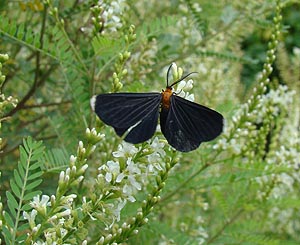 | Eysenhardtia texana -- Kidneywood * A wonderful, drought-hardy native shrub that blooms intermittently throughout the growing season, particularly after it rains. The long, white blooms draw in not only many smaller species of lepidoptera but are also highly attractive to a wide range of insects. Very fragrant. Also a host plant for Southern Dogface. |
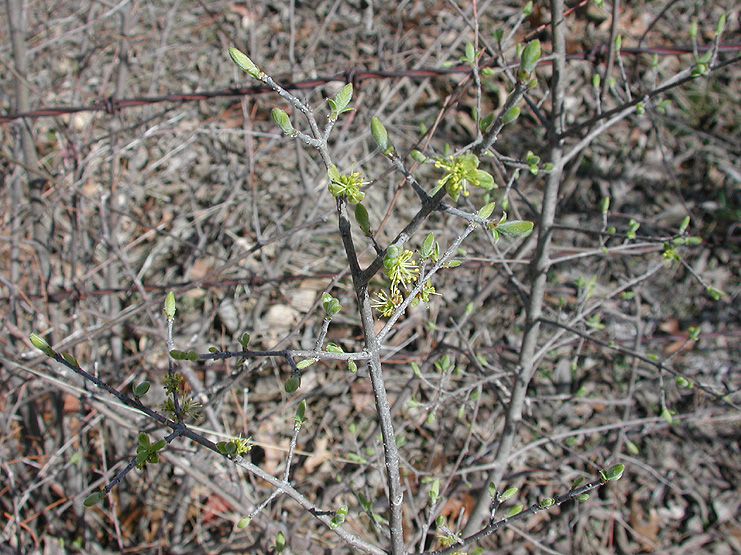 | Forestiera pubescens -- Elbow Bush A deciduous native scraggily shrub with tiny yellow flowers which appear before the leaves in early spring. Excellent nectar source and one of the best ways to find nectaring Olive Hairstreaks, Henry's Elfins and Great Purple Hairstreaks. Often found on fence rows. See the March, 2004 DCLS NEWS on the website for more information. |
Ligustrum japonicum - Wax Leaf Ligustrum An evergreen shrub that offers fragrant white blooms in May and June. | |
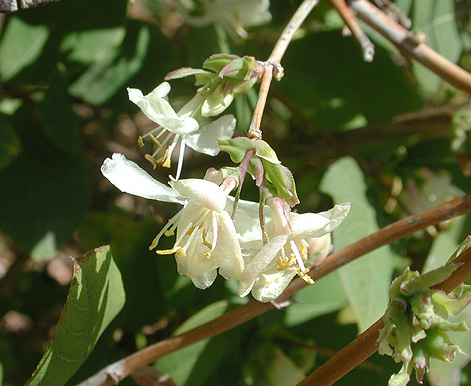 | Lonicera fragrantissima -- Winter Honeysuckle A tough cold hardy and drought tolerant shrub up to 8 feet. Normally loses its leaves in winter but can retain them during unseasonably warm winters. Extremely fragrant flowers usually appear on the branches before the leaves and are extremely attractant to lepidoptera and bees. Blooms from January - March. |
Prunus mexicana (Mexican Plum) Blooms in March and is a great early nectar source for a variety of leps as well as other insects. | |
Syringa vulgaris- Common Lilac Lilac is a wonderful early spring nectar source for many butterflies but it is a difficult plant that doesn't do well in north Texas, often looking scraggily during the summer. But it's almost worth it for the aromatic blooms.... | |
Vitex agnus-castus (Chaste Tree) Long blue to purple flowers offer a rich supply of nectar to a wide variety of species. Can grow up to 20 feet but can be trimmed to suit the smaller garden. | |